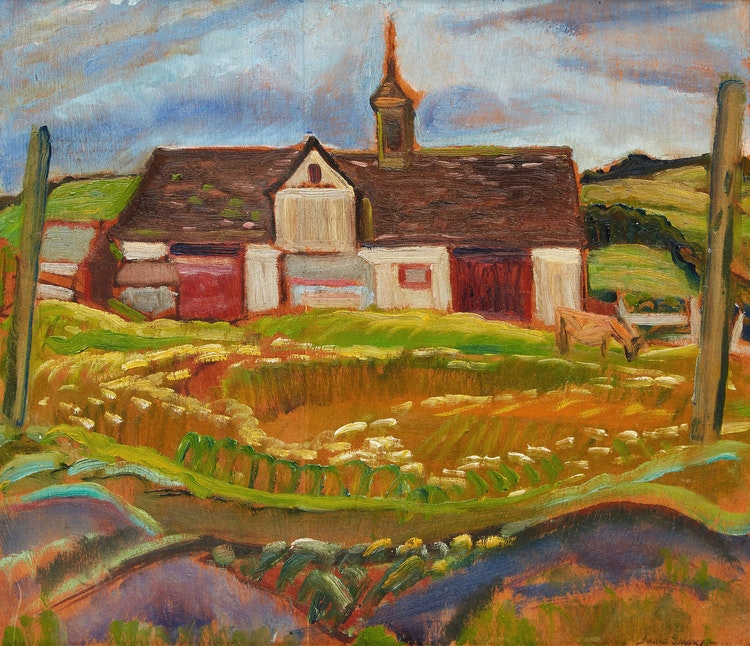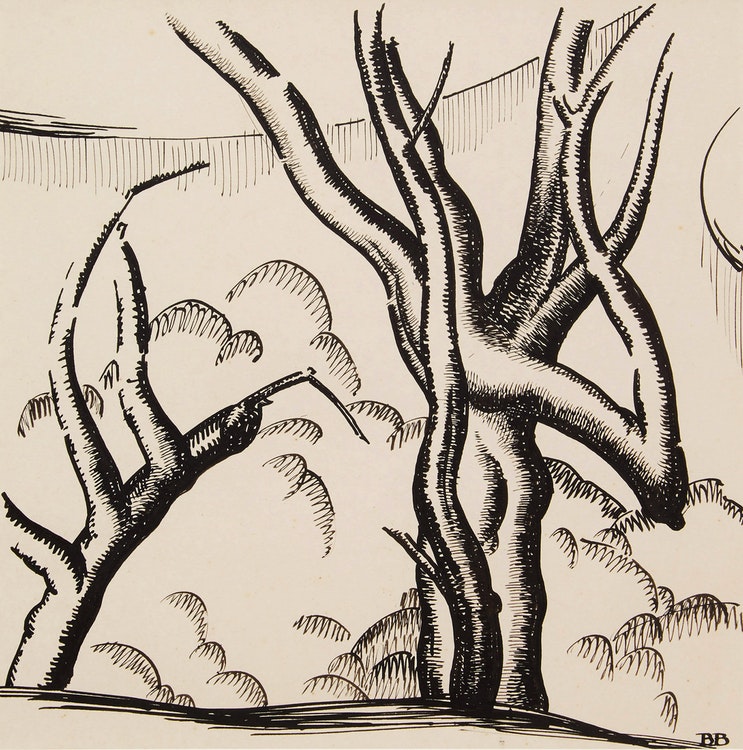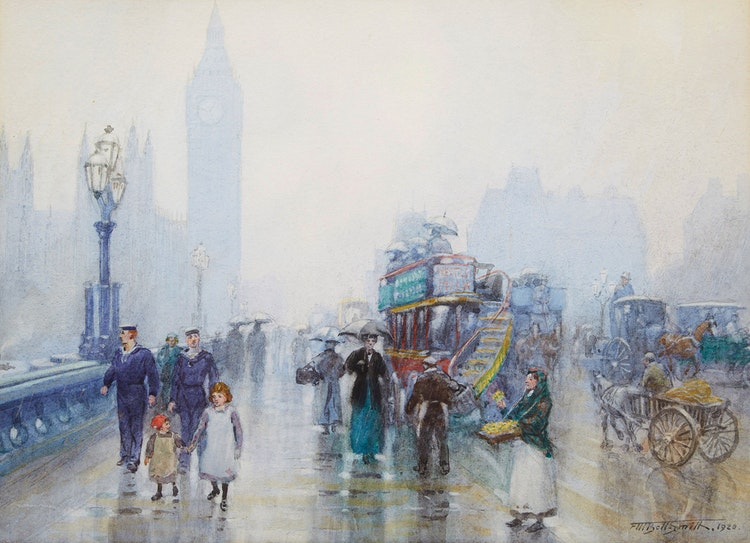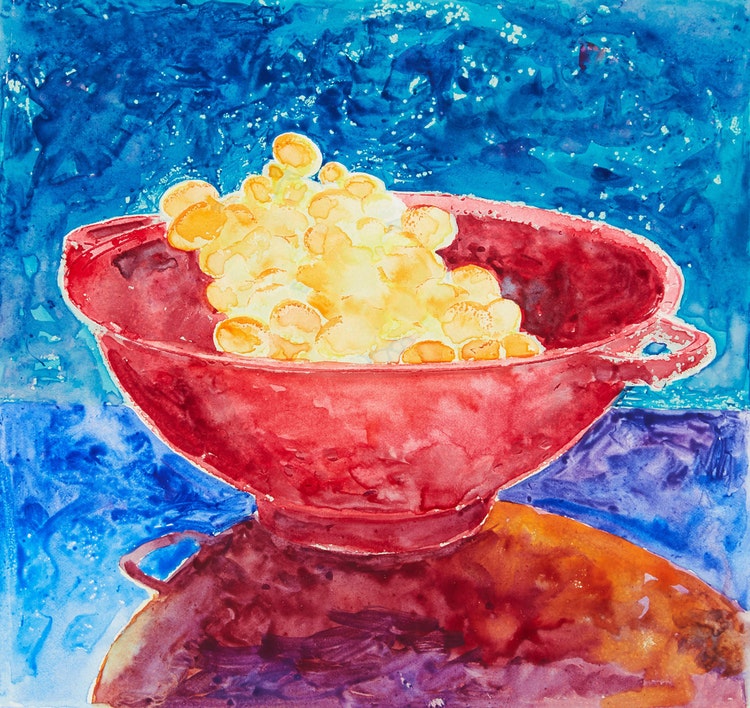The auction market is certainly alive and well and Cowley Abbott is delighted to be entrusted with exceptional Historical, Post-War, and Contemporary artworks included in our current dedicated May online auctions. The auctions complement our Live Auction of Important Canadian Art and offer collectors the opportunity to build their collections with rare gems of important artworks. This week we are rounding up a sampling of many of the highlights in the auctions.
Historical Canadian Art
On the heels of the widely successful “Uninvited: Canadian Women Artists in the Modern Moment” exhibition curated by Sarah Milroy and hosted by the McMichael Canadian Art Collection before travelling to the Glenbow in Calgary and the Winnipeg Art Gallery, women artists have been going through a renaissance on the market. With important works and texts uncovering some of the lesser-known areas of Canadian Art, the market has been enriched with a deeper understanding of these integral women and their contributions to the canon of Canadian art history.

Anne Savage “House in the Hills / Hills & Trees”

Anne Savage “Lower St. Lawrence, Métis”
Anne Savage often depicted rural Quebec landscapes, favouring farm scenes and forest landscapes. Similar to her fellow Beaver Hall members, Savage maintained a high level of rhythm of line and form within her artworks. The artworks in our May Online Auction of Historical Canadian Art have been executed with a keen sense of form, compositional balance, and a nod to abstraction with the simply rendered buildings. On the artist’s work, art critic Richard H. Haviland explains: “She is completely the landscape artist. A modernist, she is an able interpreter of the Canadian scene, and seeks to bring out the main characteristics of her subject with a bold summarization of forms. Her work is strongly coloured and shows a fine sense of design.” The keen use of vibrant greens and teal juxtaposing with soft pastels are a hallmark of the artist’s work and imbue a unique energy and palette differing from the Group of Seven and many of her male counter parts.

Bertram Brooker “Oaks on Assiniboine”
Upon visiting Winnipeg in the summer of 1929 and meeting with Lionel LeMoine FitzGerald, Bertram Brooker abandoned pure abstraction for the exploration of abstraction in figural and natural forms within the landscape. Rather than progress to abstraction as many of his peers had, Brooker instead utilised this bold initial experimentation with abstraction to incorporate into this later body of work. Heavily influenced by FitzGerald, Brooker adopted a refined and simplified stylistic handling of form, not dissimilar to the graphic arts of his early professional experience as a graphic artist. Rather than embrace the wild and ragged handling of paint to express the rugged terrain of the Canadian landscape, Brooker instead saw how the landscape could be abstracted and flattened while maintaining a refined dynamism. Utilizing compositional balance, “Oaks on Assiniboine” explores the modern handling of the landscape in the thirties, with a harnessing of simplified formalism, energetic movement with the diagonal lines within the natural forms, rendered in graphic black ink. Especially for emerging collectors, this work on paper is an excellent example of the artist’s history as a graphic designer and his exploration of modernism in landscape art.

Frederic Bell-Smith “Westminster Bridge, London”
Born in London, England, his father, John Bell-Smith, was a portrait and miniature painter. He studied in London at the South Kensington Art Schools, and in Paris under Courtois, Dupain, and T.A. Harrison. F.M. Bell-Smith has captured this iconic London landmark with vigour, depicting London as a sea of colour and a hive of activity. The acute detail in this work is testament to the artist’s keen talent of controlling the watercolour medium. The work captures the misty grey atmosphere of the city while the figures go about their day selling flowers, carting grain, commuting on London’s famous double-decker buses, and strolling along the bridge protected by black umbrellas. Bell-Smith mastered the difficult task of conveying the wet conditions with reflective puddles and a hazed background barely visible through the thick fog. Of particular note is the bright pops of colour in the work set against the otherwise blue-grey tonal scene; the red cap of the small girl walking with her sister, a bright green advertisement cladding the red bus, and the yellow blooms laying on the flower seller’s tray. The work is an exceptional example of the artist’s skill as a watercolourist and gives a charming snapshot into the artist’s life in London documenting his surroundings.
Post-War and Contemporary Art

William Hodd McElcheran “A Man & Muse”
A young artist trained in painting, McElcheran only dabbled in sculpture before committing to the medium. Inspired by European masters such as Giacomo Manzù, Alberto Giacometti, Donatello, and Michelangelo, McElcheran was interested in the heroic larger than life presence of figurative works. First working as a designer and producing religious figures, McElcheran began to develop the ‘Everyman’ form which became the forerunner to his iconic ‘Businessman’ image. This work incorporates the ‘Everyman’ while still referencing the artist’s religious motifs with an ethereal angel-like muse gracefully looking down on the man. There is a rhythmic quality to the sculpture with the gentle curve of the forms in harmony with each other. It is as though the muse is in a position of ‘saviour’ for the man who reaches up from his toes, with a longing gaze requesting to be taken away. From a taped interview with Dorothy Cameron for the Toronto City Hall exhibition catalogue, McElcheran explained, “For thousands of years artists have painted, modelled and carved the human form. I am thankful for this spadework, but I am not going to stop now and say that nothing more can be down with this infinite theme. The Greeks lived before Freud; the Renaissance came before Darwin. Today we have something else to say about man! The artist is one of the few people who still have the freedom to choose. In the face of fifteen thousand years of human thought, out of the confrontation of this vast environment of human creativity, he has the power to choose what he loves and infuse it with his own spirit.”

Mary Pratt “Grapes in a Colander”
A mature work by the artist, this mixed media piece exemplifies the artist’s strength in finding beauty in the everyday. While her husband Christopher Pratt, painted full-time, Mary Pratt did so only when she had a spare moment in her homemaking duties. She found her subjects in her daily routine, with a focus on food – jars of jelly, bowls of fruit, raw meat and fish. Pratt elevated these images of everyday household objects from the banal to something beautiful and significant. With regards to her choice of subject matter, the artist declared: “My strength has always been to find something where others found nothing. There’s a depth to everything, and everything is worth looking at, like those roses that are now past their prime. Everything is worth consideration. I really believe that.”. The luminous yellow of the grapes acts as a beacon of light emanating from the work and is complemented by the bright warm red of the colander reflected in the surface below. The work stands as a delightful representation of Pratt’s interest in capturing the effects of light to add a dramatic or theatrical aspect to her artwork.

Jean-Philippe Dallaire “Le chute d’Icare”
The artist lived in Paris throughout different periods of his life, exposed to the works of Pablo Picasso, Joan Miró and Salvador Dali. The reduction of form, simplification of line, and oblong shapes of colour within the composition are indicative of the artist’s practice of incorporating multiple tokens of abstract techniques into his works. Jean-Philippe Dallaire is best known for his imaginative and animated paintings composed of unconventional and macabre figures. He was inspired by Italian theatre, mythological figures, surrealism, synthetic cubism, and art brut. In his original and bold artwork, such as “Le chute d’Icare”, the real and the imaginary are intertwined in a world of form and colour. Here, the artist represents the Greek story of the Fall of Icarus, the cautionary tale advising that youthful carelessness will lead to one’s downfall. Dallaire always remained a representational painter, despite a continued interest in abstraction. The artist played a role as a precursor in the return to figure painting in Canada during the late 1960s.
Many more fantastic works pepper our May online auctions with full artwork details included in our online catalogue listing. Contact our specialists for more information and we would be delighted to assist!



